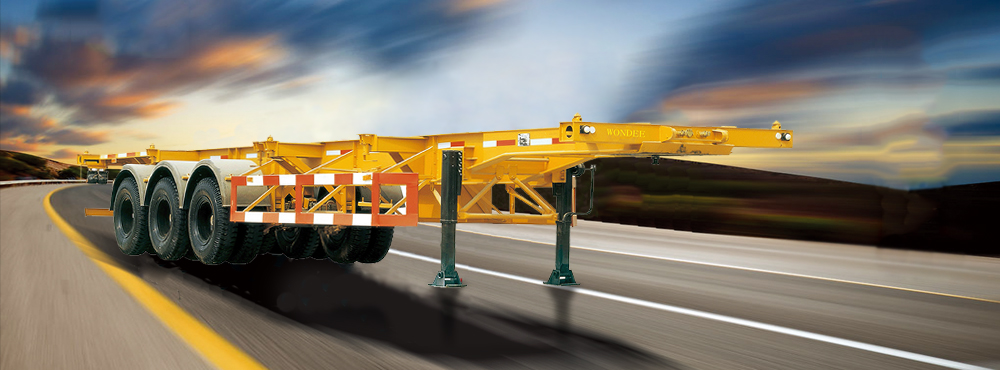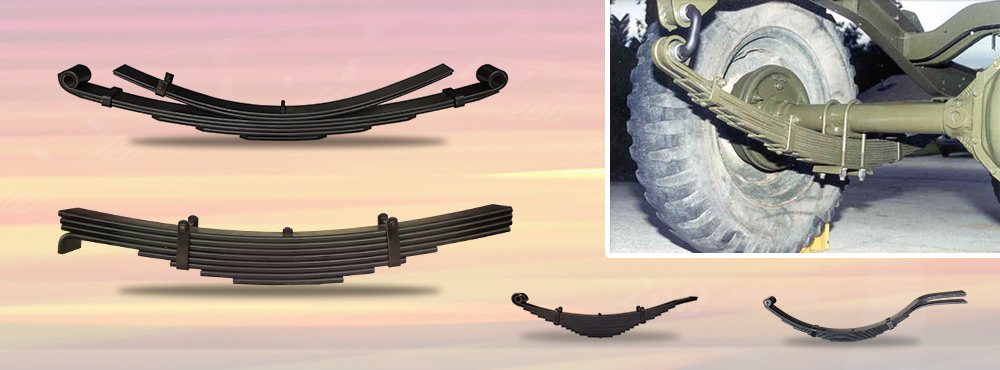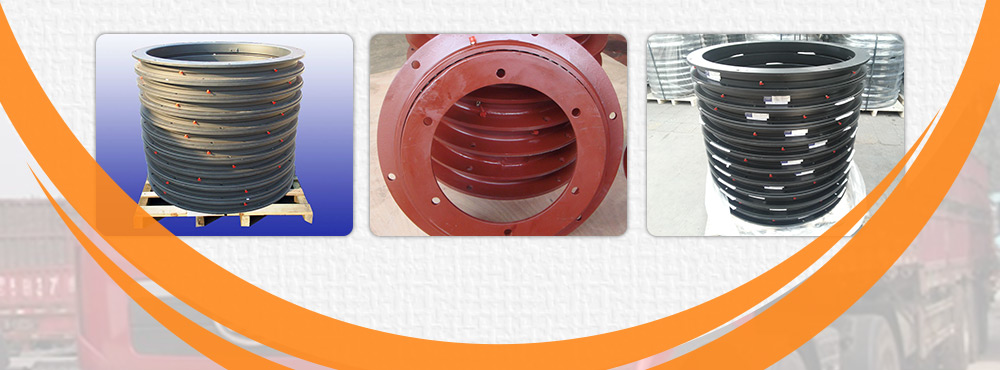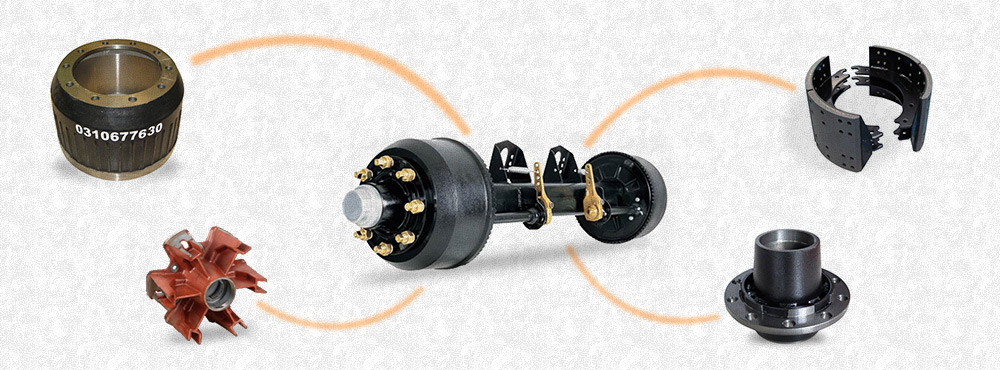CATEGORIES
SUSPENSION SYSTEM
Your Position:Home>>Suspension System
How Car Suspensions Work
2016-02-01 10:25:37
Without an intervening structure, all of wheel's vertical energy is transferred to the frame, which moves in the same direction. In such a situation, the wheels can lose contact with the road completely. Then, under the downward force of gravity, the wheels can slam back into the road surface. What you need is a system that will absorb the energy of the vertically accelerated wheel, allowing the frame and body to ride undisturbed while the wheels follow bumps in the road.
The study of the forces at work on a moving car is called vehicle dynamics, and you need to understand some of these concepts in order to appreciate why a suspension is necessary in the first place. Most automobile engineers consider the dynamics of a moving car from two perspectives:
Ride - a car's ability to smooth out a bumpy road
Handling - a car's ability to safely accelerate, brake and corner
Car Suspension Parts
The suspension of a car is actually part of the chassis, which comprises all of the important systems located beneath the car's body.
Suspension Types: Rear
Dependent Rear Suspensions
If a solid axle connects the rear wheels of a car, then the suspension is usually quite simple -- based either on a leaf spring or a coil spring. In the former design, the leaf springs clamp directly to the drive axle. The ends of the leaf springs attach directly to the frame, and the shock absorb is attached at the clamp that holds the spring to the axle. For many years, American car manufacturers preferred this design because of its simplicity.
The same basic design can be achieved with coil springs replacing the leaves. In this case, the spring and shock absorb can be mounted as a single unit or as separate components. When they're separate, the springs can be much smaller, which reduces the amount of space the suspension takes up. Independent Rear Suspensions If both the front and back suspensions are independent, then all of the wheels are mounted and sprung individually, resulting in what car advertisements tout as "four-wheel independent suspension." Any suspension that can be used on the front of the car can be used on the rear, and versions of the front independent systems described in the previous section can be found on the rear axles. Of course, in the rear of the car, the steering rack -- the assembly that includes the pinion gear wheel and enables the wheels to turn from side to side -- is absent. This means that rear independent suspensions can be simplified versions of front ones, although the basic principles remain the same.
Next, we'll look at the suspensions of specialty cars.
Historical Suspensions
Sixteenth-century wagons and carriages tried to solve the problem of "feeling every bump in the road" by slinging the carriage body from leather straps attached to four posts of a chassis that looked like an upturned table. Because the carriage body was suspended from the chassis, the system came to be known as a "suspension" -- a term still used today to describe the entire class of solutions. The slung-body suspension was not a true springing system, but it did enable the body and the wheels of the carriage to move independently.
Semi-elliptical spring designs, also known as cart springs, quickly replaced the leather-strap suspension. Popular on wagons, buggies and carriages, the semi-elliptical springs were often used on both the front and rear axles. They did, however, tend to allow forward and backward sway and had a high center of gravity.
By the time powered vehicles hit the road, other, more efficient springing systems were being
developed to smooth out rides for passengers.
Dampers: Shock Absorb
Unless a dampening structure is present, a car spring will extend and release the energy it absorbs from a bump at an uncontrolled rate. The spring will continue to bounce at its natural frequency until all of the energy originally put into it is used up. A suspension built on springs alone would make for an extremely bouncy ride and, depending on the terrain, an uncontrollable car.
Enter the shock absorb, or snubber, a device that controls unwanted spring motion through a process known as dampening. Shock absorb slow down and reduce the magnitude of vibratory motions by turning the kinetic energy of suspension movement into heat energy that can be dissipated through hydraulic fluid. To understand how this works, it's best to look inside a shock absorb to see its structure and function.
A shock absorb is basically an oil pump placed between the frame of the car and the wheels. The upper mount of the shock connects to the frame (i.e., the sprung weight), while the lower mount connects to the axle, near the wheel (i.e., the unsprung weight). In a twin-tube design, one of the most common types of shock absorb, the upper mount is connected to a piston rod, which in turn is connected to a piston, which in turn sits in a tube filled with hydraulic fluid. The inner tube is known as the pressure tube, and the outer tube is known as the reserve tube. The reserve tube stores excess hydraulic fluid.
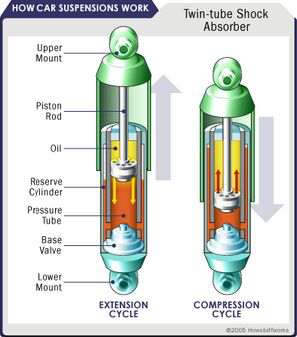
When the car wheel encounters a bump in the road and causes the spring to coil and uncoil, the energy of the spring is transferred to the shock absorber through the upper mount, down through the piston rod and into the piston. Orifices perforate the piston and allow fluid to leak through as the piston moves up and down in the pressure tube. Because the orifices are relatively tiny, only a small amount of fluid, under great pressure, passes through. This slows down the piston, which in turn slows down the spring. Shock absorbers work in two cycles -- the compression cycle and the extension cycle. The compression cycle occurs as the piston moves downward, compressing the hydraulic fluid in the chamber below the piston. The extension cycle occurs as the piston moves toward the top of the pressure tube, compressing the fluid in the chamber above the piston. A typical car or light truck will have more resistance during its extension cycle than its compression cycle. With that in mind, the compression cycle controls the motion of the vehicle's unsprung weight, while extension controls the heavier, sprung weight. All modern shock absorbers are velocity-sensitive -- the faster the suspension moves, the more resistance the shock absorber provides. This enables shocks to adjust to road conditions and to control all of the unwanted motions that can occur in a moving vehicle, including bounce, sway, brake dive and acceleration squat.
related reading: suspension System Air Suspension

